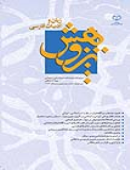تحليل داستان سياوش بر پايه نظريات يونگ
محورهای موضوعی : پژوهشهای ادبیات کلاسیک ایرانابراهيم اقبالي 1 , حسين قمري گيوي 2 , سكينه مرادي 3
1 -
2 -
3 - كارشناس ارشد زبان و ادبيات فارسي دانشگاه محقق اردبيلي
کلید واژه: سياوش شاهنامه کهن الگو يونگ,
چکیده مقاله :
كندو كاوهاي كارل گوستاو يونگ، در قلمرو اساطير و يافتههاي وي، دستمايه منتقدان بسياري، براي بررسي آثار ادبي قرار گرفته است. در پژوهش حاضر، شاهنامه فردوسي خصوصاً داستان سیاوش كه مجموعه عظيمي از روايات اساطيري و تاريخي ايرانيان باستان است بررسي گرديد و در چهارچوب فرايند فرديت يونگ و كهن الگوهاي من، قهرمان، سايه، پرسونا، پير دانا و خويشتن، كنشها و كاركردهاي قهرمانان و شخصيتهاي داستان سیاوش ارزيابي شد و چگونگي تبلور هر يك از اين كهن الگوها به عنوان مسئله اصلی این تحقیق مشخص گرديد. ضمن آنكه به نمودهاي كهن الگوهايي چون آنيما، آنيموس، مادر، ماندلا، مانا و تولد دوباره نيز اشاره شده است. روش تحقیق در این پژوهش تحلیل محتوا بوده است. نتايج اين پژوهش نشان ميدهد كه افراسياب نمود كهن الگوي سايه و رستم، تبلور كهن الگوي قهرمان و خوابگزار افراسیاب، بيانگر كهن الگوي پير دانا هستند. همچنين كهن الگوي خويشتن در شخصيت كيخسرو بروز مييابد. ضمن آنكه، عروج كيخسرو و مرگ سياوش نيز نمونههايي از مرگ و تولد دوباره در شاهنامه است. تكرار اين مضامين، در بخشهاي سه گانه اساطيري، پهلواني و تاريخي شاهنامه، هماهنگي ميان اين سه بخش را در چگونگي بروز كهن الگوها نشان ميدهد و این اصل را بیان میکند که محتوای کهن الگوها به صورت مستمر اما در شکلهای گوناگون ظهور مییابد.
The deep researches of Carl Gustav Yung in the field of myths and his findings has turned into a basic working material for many of the critics in the study and survey of literary works. In the present research, Ferdowsi's Shah-Nameh, especially the story of Siavash- as a great series of the Iranian historical and mythological narratives in ancient times- was studied. This story was evaluated within the framework of Yung's process of individuality, and also the archetypes of "self", the hero, shadow, persona, the old wise man, oneself, reactions, and the function of the heroes and the characters in Siavash's story. Then the manifestation of each single archetype was defined as a major issue in this research. At the same time the presence of archetypes such as Anima, Animus, Mother, Mandela, Manna and Rebirth are also of notice in here. The method of research in this study is based on the analysis of content. The results of this study show that Afrasiab stands for the archetype of shadow, while Rustam stands for the archetype of hero, and Afrasiab's interpreter expresses the archetype of the old wise man. Also the archetype of the self is manifested in Keykhosrow's character. Still the ascent of Keykhosrow and Siavash's death are examples of death and rebirth in the Shah-Nameh. The repetition of these themes in the three mythological, heroic and historical sections of the Shah-Nameh show the harmony and integration among these three parts in the method of expressing the archetypes, while it expresses this point that the major theme of the archetypes appears constantly; yet in various shapes and forms.


